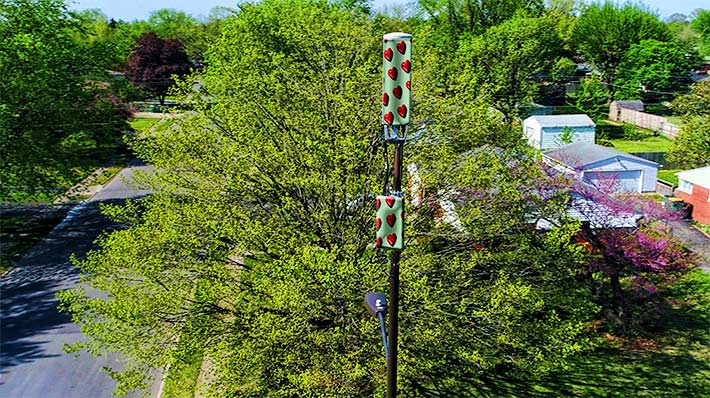
SHOW A LITTLE SMALL CELLS LOVE AND HOME VALUE INCREASE – A comprehensive study in California has shown that small cells have zero negative effect on real estate values In fact, home values have benefitted from small cell installations.
Joint Venture Silicon Valley unveiled their latest study last week regarding the Economic Impacts to Residential Real Estate from Small Wireless Facilities.
The study focused on whether objective evidence in real estate sales records shows residential real estate valuation impacts from small wireless facilities or “small cells”.
It concluded that small cell facilities do not have an appreciable effect on nearby property valuations and the oft-cited 20% reductions in valuation were not evident in their California state-wide analysis, nor in any of the metropolitan region analyses.
In fact, the report notes that statewide, real estate valuation increases from proximal wireless sites ranged from +0.03% (within 0.06 miles of a new wireless site) to +2.14% (at distances from 5.2 miles to 5.5 miles).
For purposes of illustration, the report said, California’s median single-family home price in 2020 was $758,990, therefore valuation increases ranged from $228 (0.03%) to $16,242 (2.14%).
Authored by David Witkowski, executive director of Joint Venture’s civic technology initiative and Ralph B. McLaughlin, chief economist and senior vice president of analytics at Haus, the study examined the question, “Do wireless small cell sites have an effect, either positive or negative, on the valuation of residential real estate?”
The authors applied a spatial difference-in-differences approach, an economic analysis method used to estimate the impacts from proposed development in and near residential areas. The study used a dataset of 1,734 small cell sites installed in the State of California over the time period from 2010 to 2020, and a dataset of 11,684,458 real estate transactions statewide over the same ten-year period.
“The pandemic pulled back the curtain on just how limiting and inequitable connectivity is for far too many people – even in Silicon Valley,” said Russell Hancock, president and CEO of Joint Venture, a non profit organization. “Cellular broadband was a lifeline during quarantine, with distance learning and a workforce that required that link from home. Unfortunately for some, there are coverage gaps.”
















